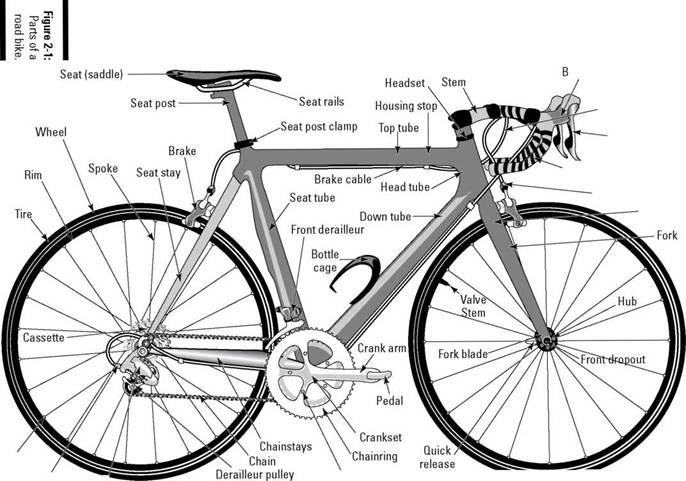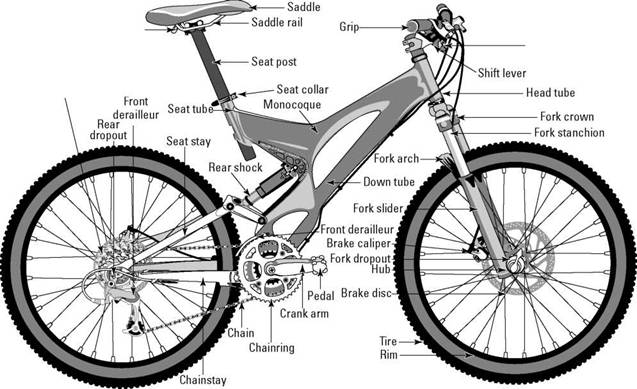Gross Anatomy: Identifying the Parts of a Bike
Figure 2-1 identifies the different parts of a road bike, and Figure 2-2 illustrates many of the same parts — and a few differences — on a mountain bike.
|
|
Not all bikes are the same, and some parts vary from bike to bike —road bikes are different from racing bikes, which are different from touring bikes and mountain bikes. A road bike has thin tires, light weight, and is built for smooth, pavement riding. Somewhat similar in appearance to a road bike is a racing bike; racing bikes are designed with expensive, lightweight materials and with a premium on aerodynamics (for example, with handlebars that are positioned lower than they are on a road bike). A mountain bike is easy to spot with its thick knobby tires, suspension, and heavy disk brakes to support riding on trails and rough terrain. A touring bike looks very similar to a road bike but usually has a wider wheelbase, a greater range of gears, and racks to carry pannier bags.
These two diagrams give you the basics on two of the most popular types of bikes, road and mountain bikes; for information specific to your specific bike, check out the manual that came with it.
|
Spoke nipple |
|
rake hoods |
|
Cable housing Levers |
|
Adjusting RpJ barrel deraifleur |
|
Chainring bolt |
|
|
|
Chapter 2: Bike Physiology: Understanding How Your Bike Works |
|
Handlebars Adjusting barrel Fork crown |
|
22 Part I: Getting Started |
|
Figure 2-2: Pa rts of a mountain bike. |
|
Saddle clamp |
|
Brake lever |
|
Cassette |
|
|



